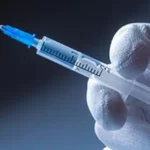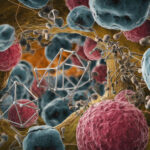The following metallic elements were found in the vaccines:
- Alkali metals: caesium (Cs), potassium (K)
- Alkaline earth metals: calcium (Ca), barium (Ba)
- transition metals: cobalt (Co), iron (Fe), chromium (Cr), titanium (Ti)
- Rare earth metals: cerium (Ce), gadolinium (Gd)
- Mining group/metal: aluminum (Al)
- Carbon group: silicon (Si) (partly support material/slide)
- Oxygen group: sulphur (S)
These substances, furthermore, “are visible under the dark-field microscope as distinctive and complex structures of different sizes, can only partially be explained as a result of crystallization or decomposition processes, [and] cannot be explained as contamination from the manufacturing process,” the researchers found.
They declared the findings as preliminary.
The findings “build on the work of other researchers in the international community who have described similar findings, such as Dr. Young, Dr. Nagase, Dr. Botha, Dr. Flemming, Dr, Robert Wakeling, and Dr. Noak,” Dr. Janci Lindsay, Ph.D., a toxicologist not involved in the study, told The Epoch Times.
“The number and consistency of the allegations of contamination alone, coupled with the eerie silence from global safety and regulatory bodies, is troublesome and perplexing in terms of ‘transparency’ and continued allegations by these bodies that the genetic vaccines are ‘safe,’” Lindsay added.
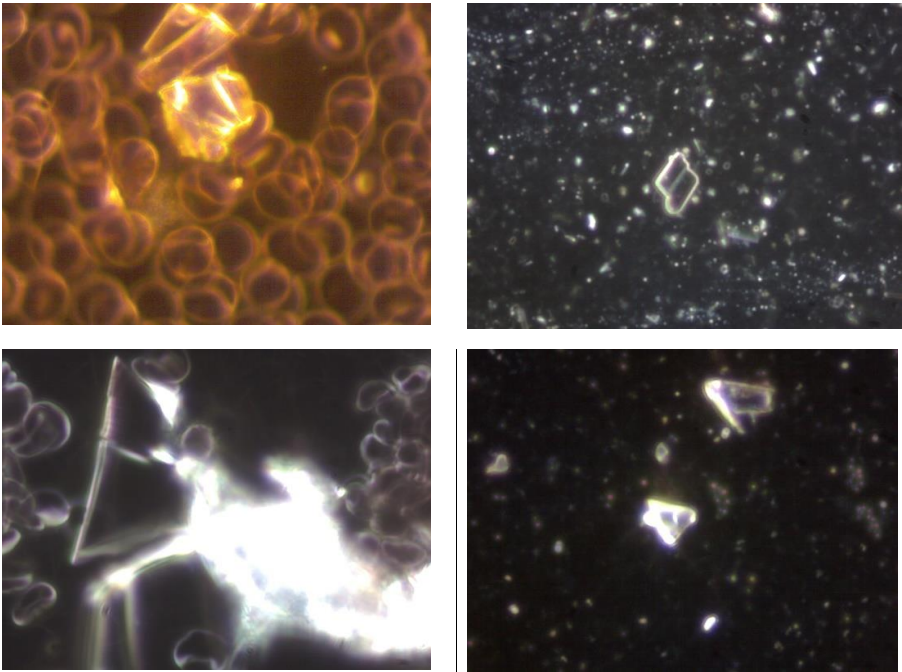
the blood of test subjects vaccinated with Comirnaty (BioNTech/Pfizer), the images on the right show that these
types of crystals are also found in Comirnaty vaccines. (Courtesy of Helen Krenn)
Helena Krenn, the group’s founder, submitted the findings to German government authorities for review.
“We had submitted it to the participants of the government and further addresses from newspapers with the platform open-debate.eu, only in Germany, Austria, and Suisse,” Krenn told The Epoch Times.
Two other important findings were that blood samples from the vaccinated had “marked changes” and that more side effects were observed in proportion to “the stability of the envelope of lipid nanoparticles.”
A lipid nanoparticle is an extremely small particle, a fat-soluble membrane that is the cargo of the messenger RNA (mRNA).
Methodology
“Using a small sample of live blood analyses from both vaccinated and unvaccinated individuals, we have determined that artificial intelligence (AI) can distinguish with 100% reliability between the blood of the vaccinated and the unvaccinated. This indicates that the COVID-19 vaccines can effect long-term changes in the composition of the blood of the person vaccinated without that person being aware of these changes,” the study states.
The findings of acute and chronic physiological changes to the blood of those inoculated with the vaccines, consistently discerned via AI software, “also echoes the findings of many other researchers and support the contentions of contamination and/or adulteration,” Lindsay said.
“We have established that the COVID-19 vaccines consistently contain, in addition to contaminants, substances the purpose of which we are unable to determine,” their study says.
The group consists of 60 members, including physicians, physicists, chemists, microbiologists, and alternative health practitioners, supported by lawyers and psychologists.
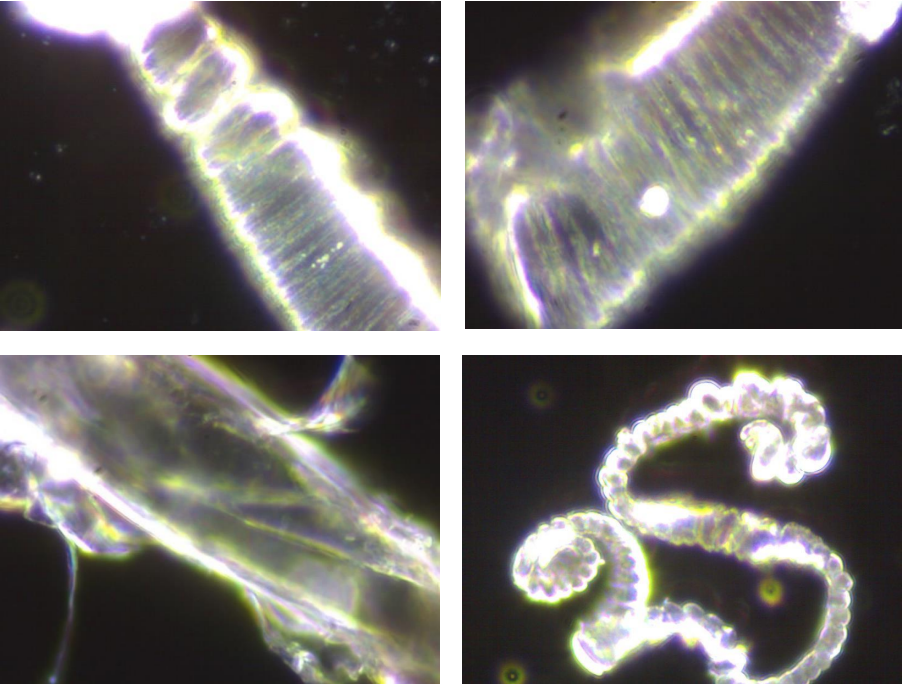
type were not found in all of the samples. (Courtesy of Helen Krenn)
The scientists claim that their results have been cross-confirmed using the following measuring techniques: “Scanning Electron Microscopy (SEM), Energy Dispersive X-ray Spectroscopy (EDX), Mass Spectroscopy (MS), Inductively Coupled Plasma Analysis (ICP), Bright Field Microscopy (BFM), Dark Field Microscopy (DFM) and Live Blood Image Diagnostics, as well as analysis of images using Artificial Intelligence.”
The analysts explain that they have been cooperating with other groups in different countries that have been executing similar investigations and have obtained results consistent with their own.
“The results from our analysis of the vaccines can, consequently, be regarded as cross-validated,” the summary report of their findings states.
“It should be acknowledged of course that [German Working Group’s] work is described as ‘Preliminary Findings,’ not yet published in a peer-reviewed journal and that chain of custody as well as the identity of many of these scientists is unknown. However, in this heavily charged and censored climate when it comes to any challenges to the ‘safety and efficacy’ of the genetic vaccines, I myself can attest to the difficulties in conducting the basic research, much less publishing that same research in a peer-reviewed journal, in order to get at these questions as well as disseminate the findings,” Lindsay said.
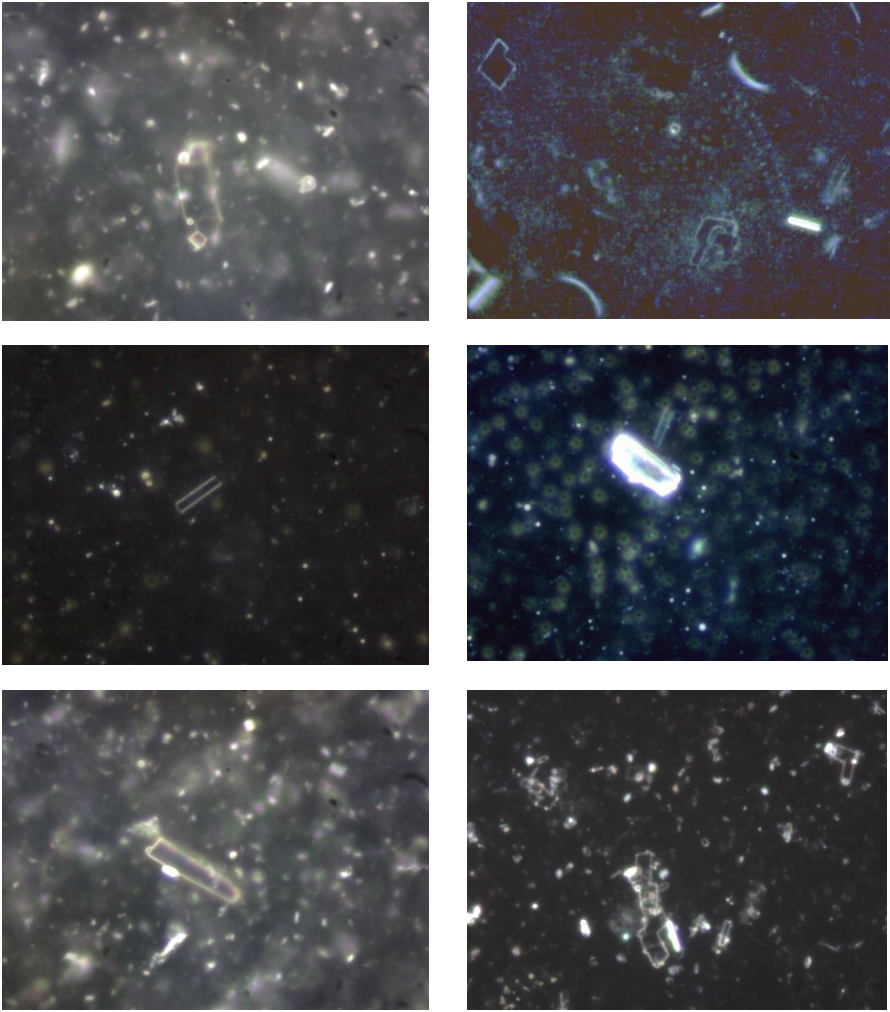
The vast number of crystalline platelets and shapes can hardly be interpreted as impurities. They appear regularly
and in large numbers in all samples. (Courtesy of Helen Krenn)
Astra Zeneca, Moderna, Pfizer, and J&J did not respond to a request for comment.



